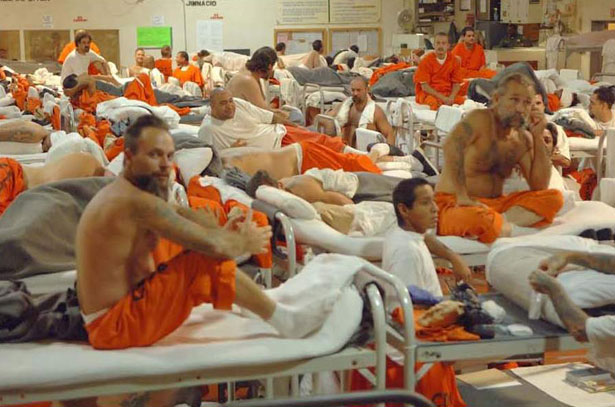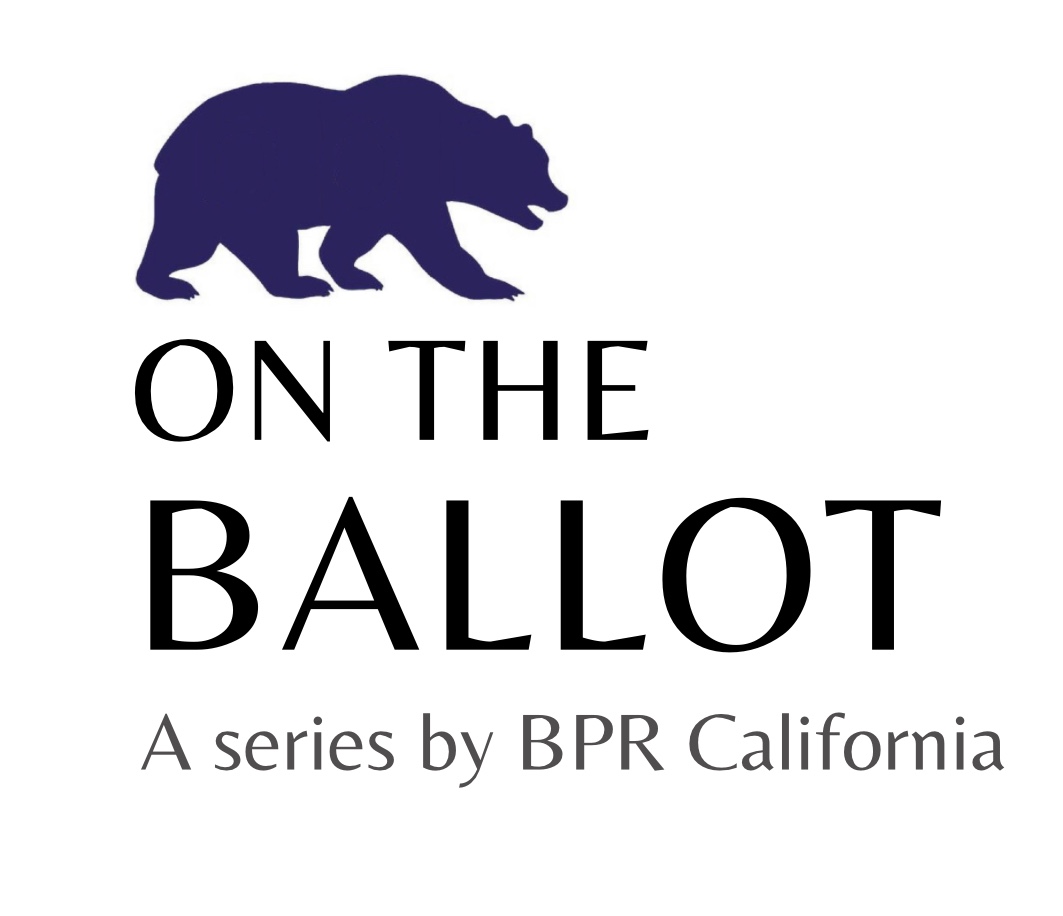“This bill is being pushed through at the same time that the people across the United States are demanding the abolition of the prison industrial complex. It’s indicative of a culture war, which is to say a class war, around prisons and policing.”
Walking on the streets of California after consuming alcohol is a misdemeanor. And come 2021, California could start collecting and testing the DNA of those arrested for (not even convicted of) certain misdemeanors. This, and a number of new dangerous California court powers, are on the state’s 2020 ballot as Proposition 20.
In the few weeks leading up to November 3, California voters will be voting on Prop 20. The measure would amend state laws (AB 109, Prop 47, and Prop 57) that sought to decrease both the severity in California sentencing and the size of California’s prison population. Proposition 20, in response to fears that crime rates are soaring, aims to impose longer sentences, classify certain misdemeanors in more serious offense categories, limit eligibility for early-release and parole and allow DNA tracking by state police for certain misdemeanor charges.
The bill has the support of a number of corporations and state representatives. In fact, due to notorious instances of looting over the summer, grocery outlets, such as Albertsons Safeway, have already endorsed or even financially supported this measure. State representatives and corporations proclaim the bill holds potential to prevent future instances of looting and theft — two of the crimes which are specifically outlined in the measure to become “wobbler” crimes. Wobbler crimes can be classified as misdemeanors or felonies at a judge’s discretion. Proponents of Prop 20 argue that the possibility of a felony charge will discourage people from committing these crimes. Furthermore, heightened sentencing severity is argued to correct the forgiving nature of Prop 47 and Prop 57.
In addition to corporate and political support, a number of prison industry-related worker unions (e.g. police officers, prison guards, etc.) have formally endorsed this bill. As each additional inmate brings tens of thousands of dollars in additional funding, ensuring incarceration rates remain high is an imperative for keeping prisons funded and their workers paid.
Surprisingly, the measure directly challenges the demands of the expansive nationwide protests in 2020 against the racial injustice housed within and perpetuated by the prison industrial complex. Opponents of the bill, which most notably include the California Democratic Party, the American Civil Liberties Union (ACLU) and the California Teachers Association, argue that, instead, reducing the severity of the prison industrial complex and defunding the police will reduce crime.
However, if passed, this would not be the first time in California’s history where voters approved ballot measures to increase the severity in sentencing and police tactics. In 1994, amidst decade-long demands for stricter law and order as championed by the Reagan administration, the California governor enacted AB 197 or the Three Strikes law. Six months after its passage, voters affirmed AB 197 in state polls. This law, creating harsh sentencing minimums for repeat (including non-violent) felony offenses, largely resembles the strategy of Proposition 20 to impose harsher penalties for crime. As a result of the Three-Strikes law, after 1994, California’s prison population steadily rose for more than a decade. Black Californians particularly were incarcerated at drastically disproportionate rates compared to White Californians from 1994 through the 2000s.
Although crime rates did decrease in the late 1990s and early 2000s, criminologists partially attribute these crime reductions to seemingly unrelated events, such as the legalization of abortion approximately 20 years prior. Individuals unwanted by their parents are at much higher risk to commit crime. When the Supreme Court’s Roe v. Wade (1973) decision made abortion legal across the United States, this demographic of “unwanted” children greatly shrank, correlating with a drop in crime rates approximately one generation later.
Along with decreasing crime rates, California prison rates have also steadily declined in the last decade (2009-2019). Part of the reason for the decline is because California’s prison population grossly exceeded legal capacity. The increase of the California prison population by more than 25 percent between 1994 and 2006 required a new approach to California criminal justice and incarceration. In 2009, CA Senate Bill 678 incentivized counties to reduce the number of felony offenders sent to state prison for simple probation failures. The downward trend in the California prison population saw an even steeper decline after the 2011 Brown v. Plata Supreme Court decision, which ruled that California prisons’ extreme overcrowding violated the Eighth Amendment protecting persons from cruel and unusual punishment. The court ordered the state of California to further reduce the prison population.

This case compelled former state governor Jerry Brown to listen to the demands of advocates for reduced sentencing and criminal justice reforms and enact A.B. 109 and 117 (which increase chances of early release with parole by delegating more focused rehabilitation efforts to counties). Proposition 36, approved in 2012, reduced the severity of sentencing put forth by the Three Strikes Law. Although these measures managed to satisfy the demands of a number of advocacy groups, the bills were to adhere to an imperative: reduce the excessive California prison population or allocate more spending to prisons.
Proposition 20 sits on the California ballot this fall despite the imperative to manage the size of California prison populations. And while a number of conservative critics claim that California’s criminal justice reform initiatives (AB 109, Prop 47 and Prop 57) passed in the last decade raised California crime rates, there has not, in fact, been significant increases in California crime rates since the passage of these measures. In fact, in 2019, California saw the lowest rates of serious crimes (homicide, rape, and robbery) in years. However, Prop 20 would amend and undo a number of these measures which lowered California crime rates and the California prison population.
How has California managed to decrease its prison population and simultaneously curb crime rates? Deterring crime is most effectively accomplished by preventing the conditions which lead individuals to crime. By reducing prison populations, California has been able to expand the scope of criminal justice beyond incarceration and re-allocate portions of funding for prisons towards other social-support and community welfare programs. These programs, when funded, are able to remedy the difficult conditions of people in higher-risk categories of crime, so that people do not have to resort to crime.
Eric A. Stanley, an Assistant Professor at the University of California, Berkeley, who edited, authored and directed a number of notable works regarding the intricate relationship between marginalized populations and the prison industrial complex, attested to the fallacy of stricter sentencing. Stanley (using they/them pronouns) maintained, “Today, not even relatively conservative criminologists would argue that sentencing outcomes are prohibitive of anything [in reference to crime].” Indeed, prevailing research in the field of criminology reveals that the severity of sentences do not deter crime, as most offenders do not expect to be caught in the first place.
Although proponents of Proposition 20 advertise the measure’s prospect of reducing crime, the measure presents a number of flaws in its efficacy to ultimately accomplish that goal. Additionally, the measure neglects the racial injustices within the criminal justice system that are likely to be further exacerbated if passed. Already a disproportionate amount of Black and Latino men and women comprise California prison populations, and Proposition 20 could very well exacerbate this racial disparity.
The Berkeley Political Review asked Eric Stanley, given their extensive knowledge on the disparities within the prison industrial complex, whether Prop 20 would in fact worsen the differences of sentencing outcomes based on race.
“Definitely,” they said, “it would only further intensify the racism, ableism and transphobia of the U.S. legal system.” In fact, the National Criminal Justice Reference Service (NCJRS), which evaluates the intricacies of race and policing in the United States, corroborates that even when laws do not explicitly show racial bias, racial biases are at play whenever criminal justice officials have discretion in handling offenders.
By allowing judges to decide sentencing outcomes for wobbler crimes, Prop 20 would further enable racial biases to affect sentencing outcomes. The NCJRS specifically addresses wobbler crimes as frequent mechanisms in which Black and Latino defendants are consistently more likely to face harsher sentence classifications (and therefore, more severe sentences). Sentencing equality is simply not a reality of the current criminal justice system. Even Supreme Court Justices have directed attention to evidence of Black defendants facing death penalty sentences at higher rates than White defendants for the same crimes. Prop 20’s framework to allow wobbler crimes and sentencing would inherently allow for discriminatory biases to result in further sentencing disparities.
Through an economic lens, Proposition 20’s passage would “definitely jack up prison costs by tens of millions (of dollars a year) if not a lot more,” commented former governor Jerry Brown. Brown, who worked to pass a number of criminal justice reform bills, also warned that this funding would have to come from schools and other governmental functions, even though better educational outcomes have been shown to be correlative to lower crime rates. The CA Legislative Analyst’s Office reports that each additional inmate in state custody costs $81,000 per year. The cost of incarceration not only produces little effects (i.e., crime deterrence) but also stalls the funding of social services that have shown efficacy to curb crime rates.
But Prop 20 seeks more than just changes in sentencing; police departments seek to utilize DNA records and DNA testing for investigations as well. The Maryland v. King (2013) Supreme Court case allows state and local law enforcement agencies to collect and test DNA records from people arrested but not yet convicted of a crime. As of 2018, California law only allows state law enforcement to collect the DNA of anyone suspected of a felony crime. Prop 20 would extend law enforcement’s ability to submit DNA evidence of any Californian simply suspected of committing certain misdemeanors (one example being shoplifting) to state and national databases for permanent record-keeping.
Research shows that many individuals who commit crimes are likely to be repeat offenders, and therefore a DNA database can assist law enforcement in criminal investigations. In 2019, a federal judge even authorized law enforcement officials to gain access to a DNA database with over a million records monitored by the online service GEDmatch. The use of DNA tracking by police is becoming increasingly permissible and common.
However, many oppose elevating the privileges of DNA collection by law enforcement. One critic of police DNA tracking, William Thompson, a criminologist and Professor at UC Irvine, reported that “police technicians were routinely misinterpreting even the most basic samples.” That is, police technicians in thousands of cases have wrongly interpreted DNA evidence, and have even charged innocent citizens of committing a crime. DNA collection for suspected, non-violent misdemeanors would give the state increased DNA tracking powers, but the very accuracy of DNA testing is questionable – an unsettling prospect if DNA is to be used to “objectively” convict suspects of a crime.
Ultimately, if Prop 20 passes, the power of law enforcement grows exponentially at the cost of citizen privacy. We asked Eric Stanley about their take on DNA tracking and collection.
“The move towards both algorithmic and DNA based policing,” they responded, “takes whatever is terrible about contemporary policing and exacerbates it.” That is, if law enforcement is permitted to engage in such algorithmic collection of personal data – DNA being as personal as it gets – the precedent for the bounds of privacy in policing practices could look fundamentally different from our modern standards.
Therefore, Prop 20 could be extremely violent for communities already terrorized by the force of the prison industrial complex and for future defendants of the California criminal justice system. However, the measure originates from a common desire to approach and curb crime. The flaw with Prop 20 and similar measures that seek harsher (extended and more serious classifications of) sentences is the core belief that incarceration of non-violent crimes will act as a crime deterrent. Not only have a number of sources refuted the viability of harsher sentences to deter crime, but some sources propose that mass incarceration actually sustains or even increases crime rates. The prison industrial complex worsens situations for the mentally ill, the impoverished and children to victims of the prison industrial complex. Each of these demographics are at higher-risk for committing crimes in the future, and the prison industrial complex produces more of these individuals with its oppressive, failure-to-rehabilitate tactics.
However, Stanley mentioned the vital economic role the prison industry plays for a number of Californians, as a large source of employment. This brings up a dilemma: the jobs for many employed by the prison industrial complex relies on high rates of incarceration so that prisons receive the funding that they do.
So, how can California deter crime, provide economic opportunities, and also remedy the violence perpetuated by the prison industrial complex, especially towards marginalized communities? Based on extensive criminology studies over the past 25 years, the American Psychological Association finds that crime prevention efforts show most efficacy through programs that alleviate “child abuse, poverty, early exposure to substance abuse and other risk factors for criminal behavior.” Advocates for these crime prevention efforts argue that, if amounts of the approximately $13.5 billion in state funding that currently sustain the prison industrial complex could be re-allocated to social services, then jobs addressing mental health, addiction and homelessness could become more lucrative and viable as economic opportunities than they previously were. Optimally, California would re-direct funds to support promising social programs that truly deter crime, provide more stable and more productive employment for all Californians and reduce the amount of trauma perpetuated by the prison industrial complex.
Prop 20 is a step in the opposite direction, merely reinforcing the authority of the prison industrial complex, which for decades has failed to actually resolve the conditions that cause crime and has instead disproportionately levied longer sentences and harsher sentences towards individuals of marginalized communities. The cost is too great. That is, if Prop 20 passes this November, California will continue to spend billions of dollars in funding the prison industrial complex’s oppressive systems and tactics of incarceration, and the effects thereof could be irreversible. After all, people cannot simply change their DNA – these policing tactics and their implications will last for generations to come.






Comments are closed.